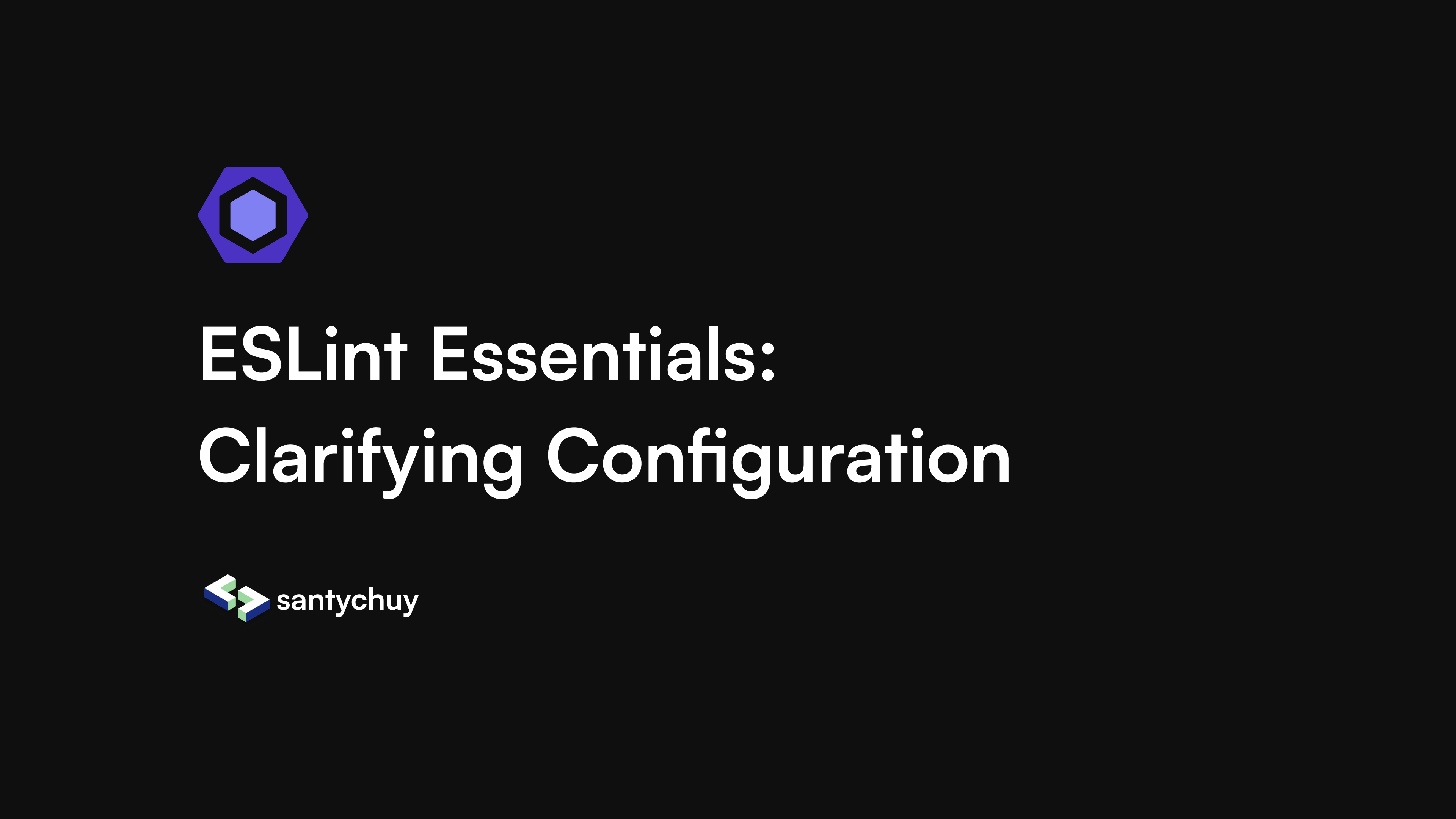ESLint Essentials: Clarifying Configuration
ESLint is an open source linter for the JavaScript/Node (←might change this part) ecosystem. Can be integrated on most of your text editors and run it on your pipeline process (terminal).
🗣️ IMPORTANT NOTE: some of the concepts are based on the newer versions of ESLint (^v9.0.0) to have it in mind if you encounter with some differences. If you want to read the migration process and its differences you can go to the article and check it out
One struggle that I often have is to not understand quite good of all the configuration and set ups for eslint, what are the differences of configurations and plugins, what means each property inside the .eslintrc (or similar) file.
The goal of this note will be to explain and understand ESLint to not get confused and do the right thing on our next project that will be using ESLint.
Terminology
Full list here
-
Abstract Syntax Tree: AST is a structured representation of code syntax
-
Rule: Code that checks an AST for expected patterns, many rules can be loaded in by plugins
-
Plugin: Package that can contain a set of configurations, processors and/or rules
-
Configuration: Set of a bunch of rules, and can include plugins
-
Configuration file: File containing preferences of how ESLint should parse files and run rules
-
Parser: An object containing a method that reads in a string and coverts it to a standardized format. ESLint uses parsers to convert source code strings into an AST shape. They’re custom parsers to let ESLint parse non-standard JavaScript syntax, for example @typescript-eslint/parser is a custom parser included in the typescript-eslint project that lets ESLint parse TypeScript code
-
Processor: Part of a plugin that extracts JavaScript code from other kinds of files, then lets ESLint lint the JavaScript code. For example
eslint-plugin-markdownincludes a processor that converts the text of```code blocks in Markdown files into code that can be linted -
Override: Like the word says, overwrites options and rules previously set on the configuration file
Understand ESLint
ESLint is completely pluggable. Every single rule is a plugin, and you can add more at runtime
Values for rules
The rules will be defined inside the property rules that is an object and will be declared 'name-rule': 'value'
-
name-rule: Will be to identify the kind of error/warning you want to use -
value: Could be of typestringornumberwhatever you choose will be the same result; the order of each value of the two types will be the equivalent of each one:stringoffwarnerror
number012
ESLint Config File
Will be to configure your ESLint project in a single place. You can include built-in rules, how you want them enforced, plugins with custom rules, shareable configurations, which files you want rules to apply to, and more.
Set it up like (for ^v9.0.0):
eslint.config.jseslint.config.mjseslint.config.cjs
And for versions below <v9.0.0:
.eslintrc.eslintrc.json.eslintrc.js.eslintrc.mjs
And placed on the root of your project and exports an array.
Here you can consult each configuration object that contains all the information needed for ESLint to execute correctly.
How is based a config file
*I’ll define some properties for the configuration file based on versions <v9.0.0 using the
*rc.{json|js|mjs}convention*
-
root: Is a boolean that indicates whether the current configuration file is the root of the ESLint configuration hierarchy -
env: Declares which environments your code is expected to run in. Each environment brings with it a certain set of predefined global variables. For example this prevents of throwingno-undefrule errors when expecting variables from the browser likewindowordocument. List of envsSome of the most commons:
- browser: Enables browser global variables like
windowanddocument. - node: Enables Node.js global variables like
processandrequire. - es6: Enables ES6 global variables and features, such as
PromiseandSet. This also sets theecmaVersionto 6. - jest: Enables Jest testing framework global variables like
describe,it, andtest. - mocha: Enables Mocha testing framework global variables like
describe,it, andbeforeEach. - jquery: Enables jQuery global variables like
$andjQuery. - serviceworker: Enables global variables available in service workers.
- worker: Enables global variables available in web workers.
- browser: Enables browser global variables like
-
extends: Instead of manually configuring each rule individually, you can apply a bulk rule configuration from a shared config using theextendsproperty. -
ignorePatterns: Property in an ESLint configuration file allows you to specify files and directories that ESLint should ignore during the linting process. Can be separated to a single file named.eslintignorefollowing the same pattern -
parser: Declares which parser ESLint should use to analyze the code. The default isespree. -
parserOptions: Passes additional options to the parser, such asecmaVersionto specify the ECMAScript version orsourceTypeto specify the code style ("script","module", or"commonjs") -
plugins: Allows using third-party plugins to apply specific linting rules for different codebases. For example,eslint-plugin-reactadds linting rules for React projects. The defined plugin rules still need to be configured underrulesorextends.
module.exports = {
plugins: ['react'],
rules: {
'react/jsx-uses-react': 'error',
'react/jsx-uses-vars': 'error',
},
};
-
rules: Allows enabling additional rules from plugins and overriding options for rules set by existing configurations. -
overrides: This property is an array of objects, where each object can contain its own set of configuration options. These options will override the default configuration for the specified files or patterns. So you’ll reuse some of the properties mentioned above
module.exports = {
overrides: [
{
files: ['src/**/*.jsx'],
rules: { 'no-console': 'error' },
},
],
};
There are other options available to set up, but these are the most often we’re going to see in our day-to-day.
I know that here I covered the basic terms and how to set it up, and there are more advance topics to cover, but we don’t need to worry to know everything that ESLint offer us, getting started and knowing the basics is more important than trying to know everything and getting overwhelm in the process. Keep learning!

